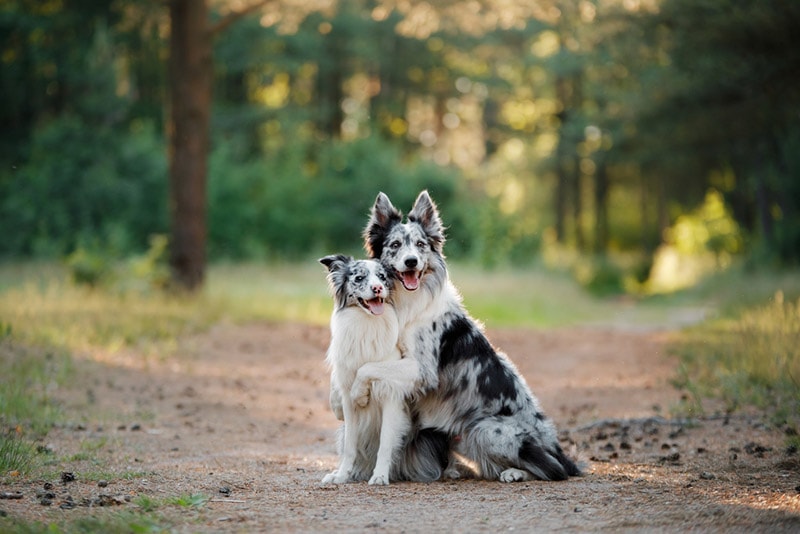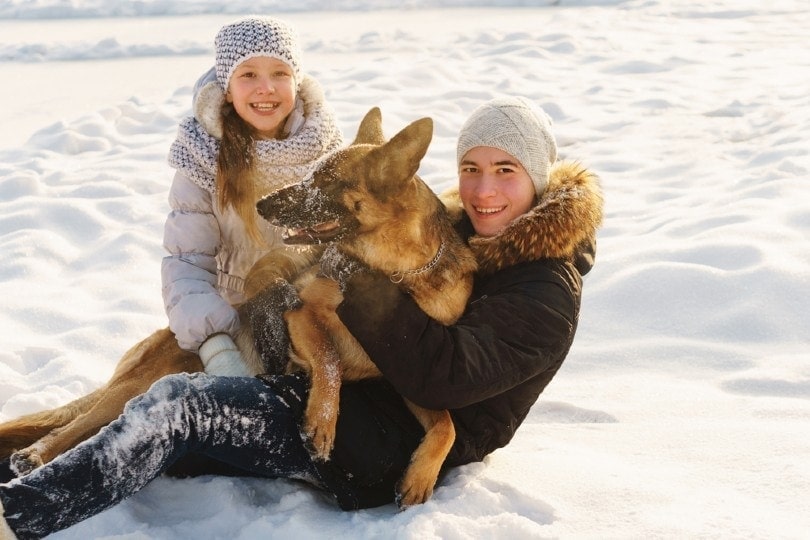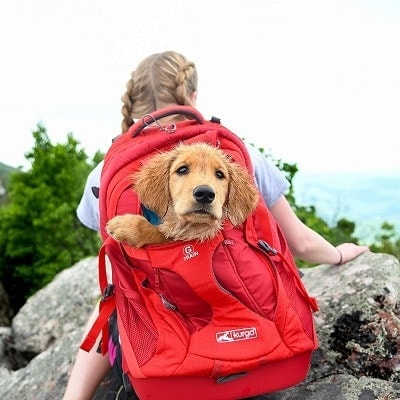How to Become a Search and Rescue Dog Handler: 7 Effective Steps
Updated on
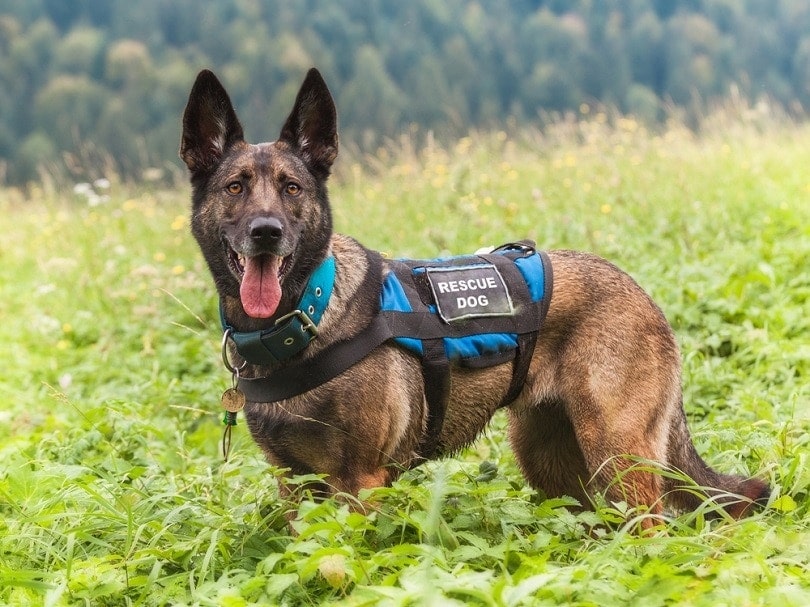
Dogs are incredibly noble and heroic creatures. They’ll willingly put their lives on the line to protect humans simply because they feel such an intense bond with us.
Nowhere is this nobility more evident than in the case of canine search and rescue teams. These dogs (and their handlers) readily go into some of the most extreme conditions known to man in order to rescue complete strangers.
If you’d like to help your fellow humans while also spending time with your best friend, then becoming a search and rescue dog handler may be right for you. Below, we’ll walk you through all the necessary steps for achieving this praiseworthy goal. Here’s how to become a search and rescue dog handler:
The 7 Steps to Become a Search and Rescue Dog Handler:
1. Understand the Job Before You Begin
Being a search and rescue dog handler isn’t for everyone. It’s an incredibly demanding task that will force you to confront unspeakable tragedy. Not very many people are cut out for it.
That’s even more evident when you realize that the vast majority of search and rescue dog handlers are volunteers. This job may offer a variety of benefits, but great pay certainly isn’t one of them.
In fact, you’ll almost certainly lose money as a search and rescue dog handler. Most handlers are expected to provide their teams with everything that they need to do the job, including transportation, gear, training, and the like. You may be thousands of dollars in the red once it’s all said and done.
It can be incredibly stressful for your family as well. It’s not easy to see a loved one walk directly into harm’s way, and it’s especially difficult when the rewards aren’t readily apparent. Becoming a search and rescue dog handler is likely to put quite a bit of strain on your relationships.
You’ll have to give up a ton of free time too. That’s obviously the case whenever disaster strikes, but you may also have to sacrifice nights and weekends for training exercises. You may have to be away from your family for days at a time in order to stay up to date on all the necessary qualifications.

2. Find the Right Dog
Of course, the most vital piece of equipment that you’ll have is also the one you’ll grow the most attached to: your dog.
You’ll need to make sure the dog is an appropriate breed before you even start. While Pugs have their charms, they’re not really suited for rescue work. You’ll want a dog that’s athletic, intelligent, and calm.
- Labrador Retrievers
- Bernese Mountain Dogs
- Bloodhounds
- German Shepherds
- Belgian Malinois
- Saint Bernards
The right breed will depend in large part on what kind of rescue you’ll be doing and where. For example, if you’re searching for victims trapped in rubble after an earthquake, then a Bloodhound is a great choice. If you’re looking for people trapped on a snow-ravaged mountain, then a Bernese Mountain Dog is a better option.
The dog also needs to be young but physically mature. This work isn’t for puppies, and senior dogs will likely struggle to keep up.
3. Learn How to Train a Search and Rescue Dog
You likely won’t know how to properly prepare your dog for search and rescue work, but that’s fine. To start, your dog needs to be an expert at basic obedience skills.
Basically, your dog should know a wide variety of commands, and they should execute them immediately and without hesitation. If your dog doesn’t sit the second that you give the command, then they’re not ready yet.
Failure to follow orders could end up getting you both seriously injured or even killed during a rescue operation, so your dog needs to be completely compliant at all times, not just when you have a treat in your hands, so make sure your training sessions don’t rely too heavily on food rewards. You won’t be able to reward them in the middle of a mission, so they shouldn’t become dependent on it.
You should consider getting your dog certified to become an emotional support animal or have them pass the Canine Good Citizen test. Not only will this demonstrate their excellence with obedience work, but it will also help them calm frightened victims in the middle of a disaster.
Once you’re completely certain that your dog has basic obedience down pat, it’s time to take the next step in your dog’s training.
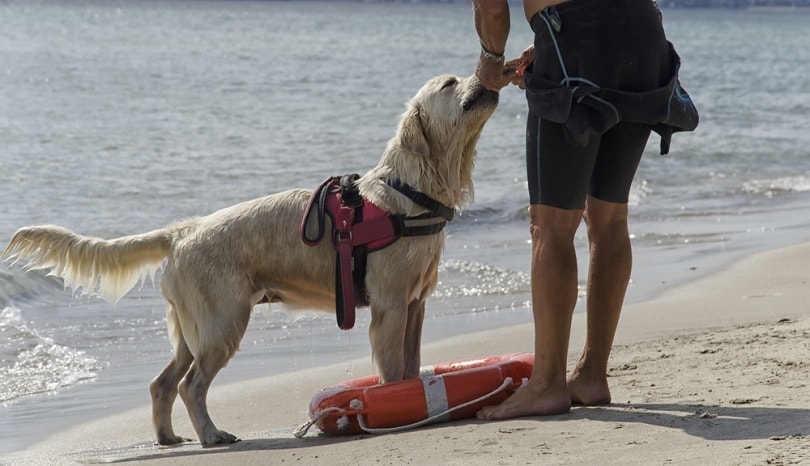
4. Find a Search and Rescue Training Class
There are many skills that your dog will only be able to learn from a qualified search and rescue instructor, so try to find one in your area.
These classes will likely be grueling, so make sure you’re both up to it. You can likely find one in your area by searching online, or failing that, you can ask your local law enforcement agency for recommendations.
It’s important that you only take this step if you’re really ready, though. These groups are flooded with poorly trained dogs and their owners who think that they have what it takes to be heroes, but in reality, they’re not willing to do even the most basic work to make their goals come true.
These courses are often incredibly expensive. It’s not uncommon for them to cost thousands of dollars or more, not to mention weeks of your life. If your dog’s not ready, you’ll waste more than the training organization’s time.
5. Don’t Forget Your Training and Equipment Too
The dog isn’t the only one who needs to be well-trained and equipped for this sort of work. Their handlers will require quite a few skills of their own.
You’ll need to pass first-aid and life-support classes so you can help seriously injured people in the field. You may also need HAZMAT training or similar classes.
If you’re not an experienced outdoors person, you’ll need to acquire those skills as well. Things like intense navigation, backcountry survival, and knot-tying skills are all necessary for a search and rescue handler.
You’ll have to supply your own equipment too. That means everything from clothing capable of handling extreme weather to GPS navigation units. Depending on what you’ll be doing and where, all the gear you need could cost several thousand dollars or more.
Having a well-trained dog is essential, but at the end of the day, it’s the handler who will make the biggest difference in your unit’s success. Make sure you’re ready for anything that Mother Nature can throw at you.

6. Find a Search and Rescue Organization
Once you and your dog are both fully trained and sufficiently equipped, it may be time to find a search and rescue organization that you can help. You can find them on the internet, through local law enforcement agencies or through the training organization that you used to learn search and rescue skills.
Each organization will have its own requirements for joining; some have extensive mentorship programs, while others let you join without much in the way of eligibility requirements.
You may be assigned a mentor, but if you’re not, you should try to find someone who will show you the ropes. Training classes are an invaluable aid, but there’s no substitute for real-world experience on missions in your area.
Most of these organizations are made completely of volunteers, so they may allow you to join without much issue — but you’ll be expected to survive on your own. They may not provide much beyond information on the mission at hand; everything else will be up to you.
7. Consider Joining a First Responder Organization
If you’d like to make a career out of being a search and rescue dog handler — and actually get paid for it — then you may need to join a first responder’s organization.
Police departments, firefighting agencies, and the military all need search and rescue dog handlers. This is where you should look if you want to do this full-time and if you want to be where the most intense action is.
Of course, while you’ll earn a paycheck from these organizations, you’ll sacrifice a great deal of freedom to them as well. You’ll likely have little say in your canine partner, and you may be shuttled all over the country when duty calls. It’s an extremely hard life, both for you and your family.
They’ll give you the best training and provide you with the most cutting-edge equipment, though, and you’ll always be sent where your skills are most needed. There’s no better way to make a positive impact in this world than by running into danger to save people in need.
It’s an incredibly difficult profession, but you’ll be hard-pressed to find one that’s more rewarding.
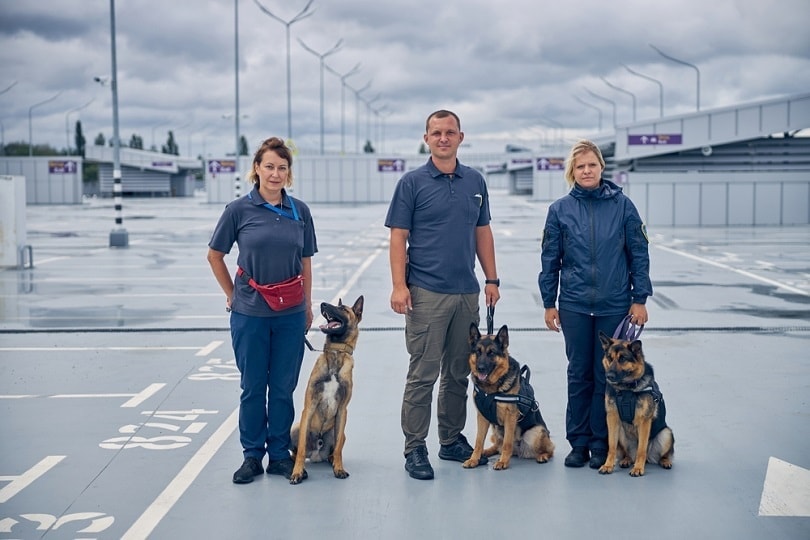
Being a Hero Is Hard Work
Being a search and rescue dog handler is one of the most heroic jobs on the planet, but few people (or dogs) are cut out for it. It’s incredibly stressful, physically demanding, and often heartbreaking.
Nothing can match the thrill of saving a life, though, nor will you find anything else that gives you the same sense of making a difference in this world. It’s one of the most beautiful, selfless jobs imaginable.
Your dog already thinks you’re a hero — but don’t you want everyone else to feel the same way too?
Featured Image Credit: jasomtomo, Shutterstock


